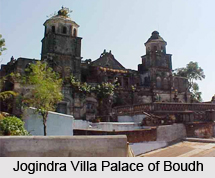 Boudh is also known as Baudhgarh is a town and a notified area committee in Boudh district in the state of Odisha. It is the district headquarters of Boudh district.
Boudh is also known as Baudhgarh is a town and a notified area committee in Boudh district in the state of Odisha. It is the district headquarters of Boudh district.
Location of Boudh
Boudh is located on the bank of Mahanadi River. It is the largest river of the state of Odisha.
History of Boudh
Boudh was formed by the division of the old Phulbani district on the 2nd of January 1994 by the ruling chief minister of Odisha, Biju Pattanaik. Nevertheless, the unearthing of marvellous Buddhist statues from Boudh lead some academicians to believe that the town was an important Buddhist centre of the state of Odisha. The early history of Boudh is still in obscurity. However, the discovery of remarkable Buddhist statues from Boudh led some scholars to believe that Boudh was an important Buddhist centre of Odisha. From the epigraphic records it is known that in the middle of Eighth Century A.D., Boudh region was under the occupation of the Bhanja rulers and was a part of Khinjali Mandala. The earliest known ruler of this Bhanja family was Nettabhanja who was ruling over the Dhenkanal region as independent ruler, but his successor migrated towards Boudh-Sonepur region and established Khinjali Mandala and ruled there as the feudatory of the Bhauma Karas of Tosali.
Demography of Boudh
Baudhgarh or Baudh had a population of 20,424. Males constitute 52% of the population and females 48%. Baudhgarh has an average literacy rate of 72%, higher than the national average of 59.5%; with 58% of the males and 42% of females literate. 12% of the population is under 6 years of age. The population of the district is 373,000. Most of the population engage in agriculture, and are thus vulnerable to periods of drought and hunger; the region is among the poorest in Odisha.
Administration of Boudh
The town of Boudh is the district headquarters of this Boudh District.
Economy of Boudh
Agriculture is the main occupation of most of the people of Boudh.
Tourism in Boudh
Buddha Statue in Boudh Museum, Jogindra Villa Palace, Hanuman Temple (By the side of Mahanadi River), Chandra Chuda and Matengeswar Temple, Patai Srikhetra Naikpada Cave, Nayakpada Cave, Bhiarabi and Madan Mohan temple, Charisambhu Temple, Bhairabi Temple, Purunakatak are the tourist destinations in Boudh.
Related Articles
Odisha
Temples of Odisha
Districts of Odisha
Puri, Odisha
Lulung, Odisha
Forts in Odisha
Crafts of Odisha
Beaches of Odisha
Cities of Orissa



















